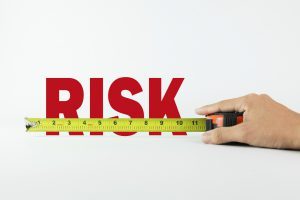Assessing investment risk – what tools to use
April 11, 2013

Today we’ll continue the discussion about investment risk. Our last column considered risk assessment surveys as one tool that can be used to assess the appropriate amount of risk that an investor should assume.
We cautioned you that many risk assessment surveys might be misleading and recommended you consider several aspects of the risk. Also important is that the level of risk you take be adjusted as circumstances change.
There are two primary problems with attempting to understand investment risk. First, the assumption that risk equals investment return is wrong.
We have all heard the popular expression that you have to take some risk in order to achieve investment gains. Past columns have covered that topic.
Some risk does lead to long-term gains. Investing in equities, for example, is riskier than interest bearing bonds but over time investors have been rewarded for taking that risk.
Popular and typical forms of investment risk such as specific stock selection, market timing and manager selection have not shown that those risks are rewarded with additional investment returns. Sometimes speculation in these areas does work; however, that is random and more a case of good luck than good judgment.
Ongoing academic research and investment industry data continue to reveal that normal speculative risks accepted by investors do not produce the desired superior investment returns. Any meaningful consideration of risk should be focused on real investment risk versus speculative risk which does not necessarily equal higher returns.
The second problem with risk is that there are many forms of risk that have nothing to do with the actual risk of a particular investment. For example, if your main financial objective is to prepare for retirement, your risk is not just investment risk but the risk of a reduced standard of living during retirement.
To illustrate this we will assume that an Oakville family is risk averse. They are disillusioned with the stock market because of the volatility and uncertainty in the markets for the last several years. They have decided to play it safe.
They inform their financial advisor about their decision and most of their assets are transferred to excellent quality, income producing, safe bonds. Sound good? Perhaps we should rethink that decision.
Did they avoid stock market risk? Absolutely. Did they unknowingly, virtually guarantee their worst nightmare of not being prepared for retirement? Regrettably yes.
Risk has many forms and any risk conversation must be multi-dimensional. Our Oakville couple did not have enough assets or earning power to have the comfort of no equity risk. They needed a higher investment return to grow their assets sufficiently to allow them to accumulate enough wealth to sustain them during retirement.
There are many other aspects of risk. A retired couple might want safety but their investments need growth to keep pace with inflation so their late retirement can be financed. That is as simple as dividing the portfolio into two sections.
The money that is needed during the short-term can be invested conservatively. Money that is needed for the long-term can be invested with more risk because the longer time frame for those assets allows them to accept normal short-term market variability.
One way to facilitate the risk discussion is to look at the historic volatility of investment portfolios similar to your own portfolio. An investor can have a better understanding of how volatility is a normal part of investing by seeing the randomness of historic returns on a well diversified portfolio.
That will permit you to put investment risk and the normal ups and downs of the market into the proper perspective. That clarity will allow those investment risks to be evaluated in the context of other risks such as investing too conservatively and not having the chance to achieve long-term financial objectives.
Sometimes more of one risk is taken by trying to avoid another risk. It is important for all investors to fully understand all of their risks and only then decide on a specific course of action.
RELATED ARTICLES
